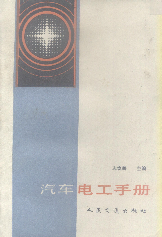汽车电工手册
边焕鹤主编,人民交通出版社1987年9月出版。32开,566页。介绍汽车电器的型号、规格、结构原理、工作特性、维修调试方法及有关电子学、半导体等方面的基础和知识。

主要责任者: 边焕鹤
责任方式: 主编
出版者: 人民交通出版社
出版地: 北京
字数: 381 千字
页码: 1-566
开本: 32
中图分类号: U
装帧: 简
语种:中
定价:18.00
出版时间:1995-07
丛书多卷书否:否
书目简介:本册工具书共收录70条词条。
| 词条 | 汽车电工手册 |
| 类别 | 中文百科知识 |
| 释义 | 汽车电工手册边焕鹤主编,人民交通出版社1987年9月出版。32开,566页。介绍汽车电器的型号、规格、结构原理、工作特性、维修调试方法及有关电子学、半导体等方面的基础和知识。  主要责任者: 边焕鹤 责任方式: 主编 出版者: 人民交通出版社 出版地: 北京 字数: 381 千字 页码: 1-566 开本: 32 中图分类号: U 装帧: 简 语种:中 定价:18.00 出版时间:1995-07 丛书多卷书否:否 书目简介:本册工具书共收录70条词条。 |
| 随便看 |
开放百科全书收录579518条英语、德语、日语等多语种百科知识,基本涵盖了大多数领域的百科知识,是一部内容自由、开放的电子版国际百科全书。